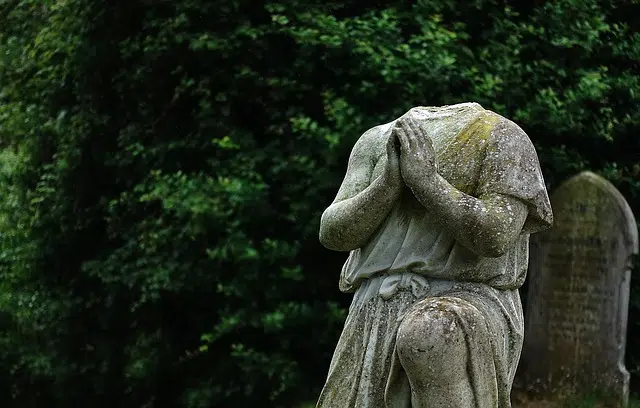
The term "headless" denotes the absence of a head on a body.
Acephalous is an adjective that comes from the Latin word acephălus , in turn derived from the Greek aképhalos . The term refers to one or that which lacks a head , whether in a physical or figurative sense.
absence of head
Acephaly is called, therefore, the lack of a head . In the case of human pregnancy, this is a rare malformation .
The headless fetus is formed together with another fetus that does not suffer from any disorder . It is a parasitic twin that cannot live independently, since it has no head or heart (it receives blood through the action of its brother's heart).
headless state
The absence of leaders or rulers with decision-making power , on the other hand, is also mentioned as acephaly. A headless State , in this framework, does not have a government that can assume the management of public affairs.
Acephaly, thus, can be linked to anarchy . A country can become headless for multiple reasons, such as the death or overthrow of a president, the weakening of the person in power, or the strengthening of a group or sector that is not part of the state orbit.
Take the case of a nation whose government lost control of numerous regions to insurgents. That is why the measures taken by the president are not respected and his policies cannot be applied in many areas. Faced with this reality, analysts affirm that the territory is headless.
Headless sculptures
In the field of sculpture , it is common to find headless pieces . There are human and animal figures that, for different reasons, do not have heads. At this point we must distinguish the two main reasons for this peculiar feature: that the sculpture has lost certain parts due to the deterioration typical of the passage of time and manipulation; that the artist has decided to do it this way to express a particular message.
One of the best-known exponents of headless sculptures is the so-called Victory of the Simaceans , found at the end of the 1700s. It is a female figure that has its origins in the Hellenic era (also known as the Hellenistic period or, simply, Hellenism ). a stage in the history of Antiquity that is chronologically delimited by the death of Alexander the Great , in the year 323 BC. C., and the suicide of Cleopatra VII and Mark Antony , 31 BC. c.

In art, headless sculptures are very common.
The creation of this work, which seems to represent a goddess whom they have not yet been able to identify, is located at the end of the Hellenic era. We can find references in certain literary works that deal with Monte Celio, in Rome, where this headless-looking sculpture comes from. Its color is leaden gray and it was made of dark stone. Its artistic quality is worthy of admiration. Another headless sculpture that arouses great interest among connoisseurs shows a male figure wearing a tunic and a chlamys (a cloak worn in the past by the Romans and Greeks). It was found in 1913 on the Cerro de San Albín, and it is believed that it dates back to the 2nd century.
The material in which it was made is grayish white marble. It is believed to represent Cautópates , one of the dadaphoros (figures of young people carrying a torch, typical of Roman art ) that appear next to the god Mithras ; his companion is Cautes . While the latter carries his lit torch pointing upwards, Cautopates displays it exactly the other way around. Although there are other statues of this character in which his entire body can be seen, the headless specimen is related to him by the characteristics of his attire, the remains of his hair and the position of his legs.
